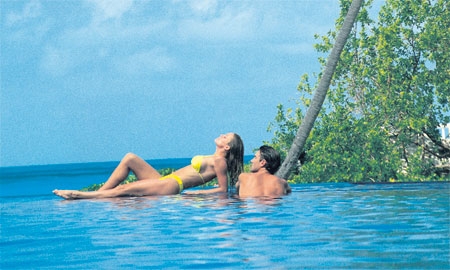With lazy palm trees above and fine white sand below bare feet, lounging tourists – a bottle of Corona in hand – at the tranquil resort town of Puerto Vallarta, nestled within Banderas Bay off the Pacific Ocean, speculate eagerly on the low helicopters circling above.
As the day goes on, the excitement is palpable as the swimsuit-clad vacationers realize President Felipe Calderon is frequenting their same tourist destination pick, shooting the ‘Royal Tour’ of Mexico for a PBS special, hosted by CBS News travel editor, Peter Greenberg.
Puerto Vallarta is just one of the many traditional stops on Mr. Calderon’s tour to commemorate 2011 as the Year of Tourism in Mexico. He will highlight not only the world-famous beaches along the Pacific coast of Mexico such as Acapulco, or the Atlantic coast like Cancun, but also the Meso- American ruins and the Spanish colonial cities.
Although Mexico faces some difficult national and economic challenges, it still remains the 10th most visited country in the world with 22.3 million international tourists and second in the Americas, especially during Spring Break in the United States, where it is the typical vacation party spot for American college students. This number does not include the more than 6 million people ushered off their cruise ships each year to experience a brief glimpse of Mexico.
The government is stepping up its efforts within the country, such as increasing connectivity and improving tourism infrastructure, seeking to maintain and increase the number of visitors who enjoy its rich culture and natural beauty every year.
With the Atlantic and Pacific Oceans hugging the coasts of Mexico, and an array of tropical islands, it is no secret the abundance of divine beaches that line the coasts. Here tourists from all over the world enjoy from the leisurely sunbathing and snorkeling in the clear seawater to the more extreme surfing and cliff diving. This natural beauty is paralleled by the eclectic mix of architecture and arts within the bustling Mexican cities. Mexico City, the capital with about 8.84 million people, is an important center of ancient Aztec culture, as well as one of the most important financial centers in North America.
This Meso-American city, said to be the site of the birth of Mexico by the Aztecs in 1325, boasts the Zocalo, one of the world’s largest public plazas as well as the Bullfighting Ring (Plaza de Toros Mexico), along with the traditional Aztec sites such as the Pyramid of the Sun and the Pyramid of the Moon, ancient majestic structures that challenge the surrounding mountains. Tourists file through ruins of monuments and uncovered cities which can be seen throughout the country from the three prominent ancient American cultures: the Aztecs, Mayans and Olmecs.
About 350 miles southeast of Mexico City lies Guadalajara, where visitors indulge in the traditional Mexican pleasures like tequila and the sounds of the colorful Mariachi bands. Although similar to a modern European city, here, like many smaller cities throughout Mexico, there is a clear mix of indigenous culture and the marks of the 16th century Spanish colonial period.

0 COMMENTS